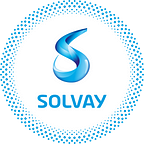What do Christian Dior and fertilizers have in common?
Christian Dior has been synonymous with splendor and elegance and ranked top in the fashion hall since its inception in 1946.
The founder, Christian Dior, was born in Granville, a beautiful city on the Normandy coast in northern France on January 21, 1905. His family belonged to the prominent, upper-class at that time and his childhood was spent under his parents’ well-developed blueprint for growth.
Despite Dior showing a strong interest in art from a young age, his parents wanted him to become a politician or diplomat. Young Dior could only give way to his parents’ wishes and went to the elite Sciences Po to further his studies.
Paris was the most fashionable, romantic and artistic city in the world. Dior indulged himself in paintings and various art salons. In Paris, where European artists were gathered together, he met a group of friends, such as Dali and Picasso, who shared their own interests and later became famous in their respective fields. His indulgence in art seriously affected his studies and he was warned several times by the school.
Discovering that Dior had no chance of becoming a politician, his parents paid for him to open up a gallery. Dior could have lived a carefree life as an artist if the future domestic misfortunes hadn’t happened…
In 1931, Dior’s father went bankrupt. As a result, the gallery was closed due to the lack of financial support. His mother then died. After repeatedly failing in his job search and no financial sourcing, Young Dior’s life was filled with turbulence and hunger. He even caught tuberculosis. After recovering, he got a job drawing patterns at a tailor. His talent began to emerge. After World War II, he was promoted from a junior apprentice to a second-class tailor. With his talent and unremitting efforts, he gradually became famous in the fashion industry in Paris.
In 1946, Dior met the textile giant of the time, Marcel Boussac, who expressed his appreciation for Dior’s talent and invested in him so he could start his own business. In 1947, the Dior brand was officially established. It was the end of World War II and the whole fashion industry was in malaise. Despite the challenges, Mr. Dior displayed his first personal fashion collection in a specialty store on Avenue Montaigne 30, in Paris. Shocking the public, 90 models were dressed in waist coats, wide-length dresses and appeared in public with an A-line silhouette. With the new collection, Dior redefined women’s clothing. Women were crazy about his designs.
So here comes the point! While Dior is such a great central figure in fashion industry, do you know what his father did?
Dior’s father, Louis Maurice Dior, made his fortune by operating chemical fertilizers!
Fertilizer, full name as chemical fertilizer, belongs to chemical products. It is the “grain” designed for plants that helps improve land productivity and increase crop yield. At Louise Maurice Dior’s time, chemical fertilizers were high-tech goods and a lucrative business. Dior and his father had a long-term vision that guided the industry.
It is said that in the 1940s and 1950s, domestic farmers did not know about fertilizers, so they nourished the land with farm manure. It was not until the 1970s that China began to introduce fertilizer production facilities on a large scale and promoted the facilities as well. With the continuous improvement of productivity levels, the supply and use of chemical fertilizers in China was constantly increasing. With the continuous increase in the consumption of chemical fertilizers, grain output in China had increased 12 times by 2015.
Despite the increase in fertilizer use, we must remain aware that over-fertilization wastes resources and costs, which also leads to environmental pollution. To combat this pollution, many countries formulated well-defined action plans. For example, Germany will ban the use of ordinary urea in 2020 and only synergistic urea can be applied directly to the field. France has also been developing relevant efficiency management policies for nitrogen fertilizers.
When it comes to technology that increases nitrogenous fertilizer efficiency, we are a leading enterprise in Europe. N Protect® is an example of our commitment to sustainable innovation in agriculture. This technology, emphasizes microfluidic and robotic as its core competence, in combination with the Lab of Future( jointly established by Solvay, CNRS and the University of Bordeaux). This is the result of extensive resource investments made since 2005. Currently N Protect® has been promoted and sold in more than a dozen countries around the world and has maintained rapid growth.
N Protect ® represents a series of fertilizer additive products. With such a small amount of additives, N Protect ® can help farmers save 10–20% of nitrogen fertilizer or increase up to 20% of yields in crops.
Its main components include urease inhibitors, nitrification inhibitors, green solvents, formulation additives and other patented technology. By inhibiting the activity of soil urease, urease inhibitors slow down the conversion of urea hydrolysis to ammonium nitrogen process, thereby reducing loss of nitrogen in the form of ammonium volatilization and damages from the further nitrification leaching. Nitrification inhibitors can inhibit the activity of nitrification and nitrite bacteria in soil or reduce the conversion of ammonium nitrogen to nitrate nitrogen, thus reducing nitrogen leaching losses and greenhouse gas emissions.
Produced in France, the origin of fashion, N Protect ® products also embody some fashionable elements. Solvay can customize different colors and different fragrance formula to meet different market needs.
